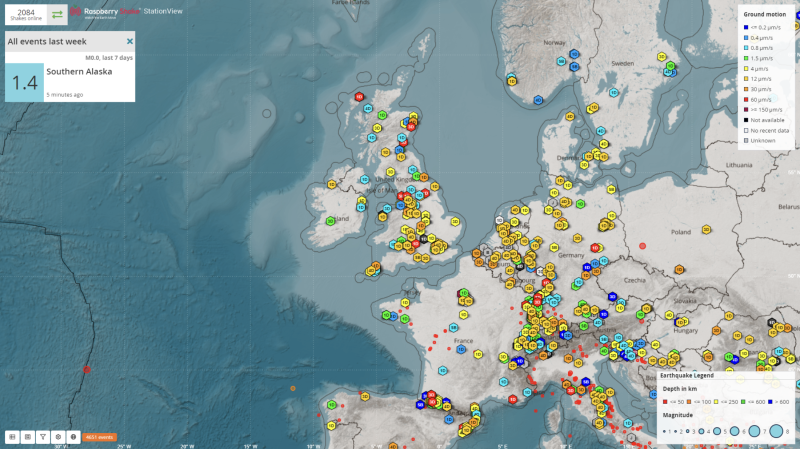What interesting ways have people used Raspberry Shake?
Mike: The world went quiet during Covid, with everyone indoors, shut away. Our network is the largest seismic network in real time around the world and we noticed that the human noise of people walking around, traffic, etc., went quiet. It generated some buzz in our community.
It allowed for seismographs to actually detect more of the Earth’s rumble, but on the other side it was fascinating how much noise was reduced, and there was a study done on it in Science.
Branden: There were 72 authors for the paper. 71 of them are professional seismologists… and then there’s one person who is listed as a co-author who is a citizen scientist from our community.
Mike: Raspberry Shakes and Booms have been used in wildlife conservation. So for detecting elephants, how they communicate with each other, and it’s been used in a savannah in Africa.
And also for conservations efforts for the black-footed ferret. A zoo worked alongside seismologists, and what they did was try and find new habitats for the ferret. So they set up Raspberry Shakes in various habitat zones, because they’re very sensitive to vibrations so, as an endangered species, they want to make sure they’re happy.
Detect earthquakes and more with this excellent kit
01. Hardware setup
With the DIY kit you have to supply your own Raspberry Pi, and get the geophone wired up to the Raspberry Shake board itself, which needs to be placed on the first 26 pins of Raspberry Pi’s GPIO. Seal it inside the enclosure and then make sure it will stand level with a spirit level and the adjustable feet in its desired location.
02. Install software
If you didn’t get the Raspberry Shake SD card, download the OS and install it with Raspberry Pi Imager. Plug in the SD card and power up Raspberry Pi, and then head to a browser on another computer and type in http://rs.local. The username is myshake, while the password is shakeme by default, so make sure to change them.
03. Listen for earthquakes
Once all set up, you can start sharing your data to the Raspberry Shake community – exact location is obfuscated so people won’t be able to find out where you live. After hitting Forward Data, your Raspberry Shake will restart and you’ll be able to see data from your station from the global station view page.



Schreibe einen Kommentar
Du musst angemeldet sein, um einen Kommentar abzugeben.